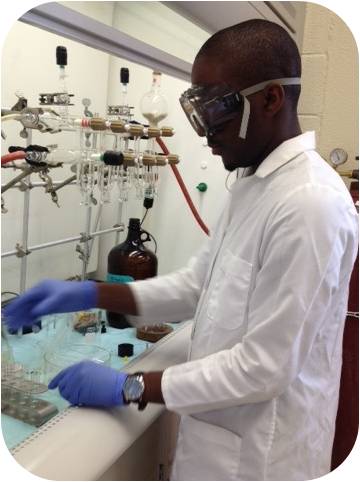Laboratory Safety
Laboratories and shops may contain a number of hazards. Employees and students must receive training before starting any activities in a laboratory setting that could impact their safety.
General laboratory safety principles include:
- Reporting all accidents to a supervisor.
- Wearing appropriate clothing.
- Knowing the location and operation of safety showers and eyewashes.
- Labeling all containers of hazardous materials, including hazardous waste.
- Being familiar with the properties of the chemicals used in the lab.
Mandatory Safety Rules
- Eye protection is required for all personnel and visitors in all locations where there is a possibility of a chemical splash/reaction or an operation that may potentially cause injury to eye(s).
- Eating, drinking, smoking, gum chewing, applying cosmetics, and taking medicine in laboratories where hazardous chemicals or radioactive isotopes are used is strictly prohibited.
- Wear gloves whenever handling hazardous chemicals, sharp-edged objects, very hot or very cold materials, toxic chemicals, and substances of unknown toxicity.
- Secure all compressed gas cylinders to walls or benches.
- Do not store chemical containers on the floor.
- All containers of chemicals should be labeled properly. Any special hazards should be indicated on the label.
- For certain classes of compounds (e.g., ethers as peroxide formers), the date the container was opened should be written on the label.
- Lab users must wear closed toed shoes made of a non-woven material with non-slip soles.
- Lab users must wear a closed lab coat in the lab at all times. Lab coats must be removed before leaving the lab.
- Store corrosives and liquid chemicals below eye level (4 to 4.5 feet).
- No children under 12 years of age may be present in any lab where hazardous chemicals are stored or used.
- Used or contaminated needles, syringes, small bore pipettes, slides, lancets, scalpels and razor blades are to be placed in a red sharps container.
- If the lab has a sprinkler system, no more than 5 gallons of flammable and combustible liquids, combined, should be stored outside of a flammable storage cabinet. If the lab does not have a sprinkler system, no more than 2 gallons should be stored outside of a flammable storage cabinet..
